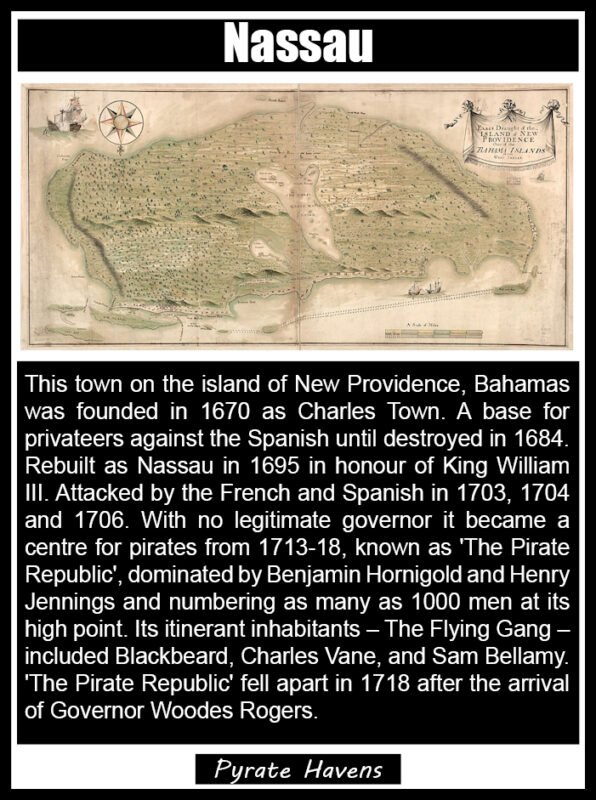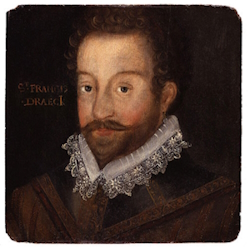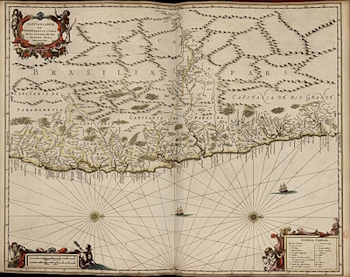
 The explorer and privateer Sir Francis Drake was one of the most famous English historical personalities, best known for circumnavigating of the world and playing an important role in defeating the Spanish Armada. To the Spanish he was an infamous pirate known as El Draque (The Dragon in old Spanish), but to the English he was a national hero. He was born in about 1540 in Tavistock near Plymouth, Devon, but grew up in Kent. He was the oldest of twelve boys and his father, Edmund Drake, was a preacher. At the age of twelve Drake became an apprentice to the master of a small freight vessel, which he later inherited. Not satisfied with the life of a coastal trader, he sold the vessel and returned to Plymouth, where he had contacts – John and William Hawkins, who were possibly his cousins. He sought employment on their voyages. Drake married Mary Newman in 1569, but not much is known about her.…
The explorer and privateer Sir Francis Drake was one of the most famous English historical personalities, best known for circumnavigating of the world and playing an important role in defeating the Spanish Armada. To the Spanish he was an infamous pirate known as El Draque (The Dragon in old Spanish), but to the English he was a national hero. He was born in about 1540 in Tavistock near Plymouth, Devon, but grew up in Kent. He was the oldest of twelve boys and his father, Edmund Drake, was a preacher. At the age of twelve Drake became an apprentice to the master of a small freight vessel, which he later inherited. Not satisfied with the life of a coastal trader, he sold the vessel and returned to Plymouth, where he had contacts – John and William Hawkins, who were possibly his cousins. He sought employment on their voyages. Drake married Mary Newman in 1569, but not much is known about her.…
The Pirate Hunter: The True Story of Captain Kidd by Richard Zacks
 This harrowing tale traces Kidd’s voyages in the 1690s from his home near Wall Street to Whitehall Palace in London, from the ports of the Caribbean to a secret pirate paradise off Madagascar. Author Richard Zacks, during his research, also unearthed the story of a long forgotten rogue named Robert Culliford, who dogged Kidd and led Kidd’s crew to mutiny not once but twice. The lives of Kidd and Culliford play out like an unscripted duel: one man would hang in the harbor, the other would walk away with the treasure. Filled with superb writing and impeccable research, The Pirate Hunter is both a masterpiece of historical detective work and a ripping good yarn, and it delivers something rare: an authentic pirate story for grown-ups.
This harrowing tale traces Kidd’s voyages in the 1690s from his home near Wall Street to Whitehall Palace in London, from the ports of the Caribbean to a secret pirate paradise off Madagascar. Author Richard Zacks, during his research, also unearthed the story of a long forgotten rogue named Robert Culliford, who dogged Kidd and led Kidd’s crew to mutiny not once but twice. The lives of Kidd and Culliford play out like an unscripted duel: one man would hang in the harbor, the other would walk away with the treasure. Filled with superb writing and impeccable research, The Pirate Hunter is both a masterpiece of historical detective work and a ripping good yarn, and it delivers something rare: an authentic pirate story for grown-ups.
Pages: 435
Published: 2002
ISBN: 978-0786884513
 In the early 17th century an autonomous, self-sufficient community of escaped slaves (maroons) known as Palmares established itself in the Captaincy of Pernambuco in north-eastern Brazil. It grew considerably throughout the 17th century, eventually becoming the largest settlement ever founded by runaway slaves in Brazil. Most of the information about this community comes from Portuguese and Dutch colonists and many of the names of those involved are unknown. At its apex, the population of Palmares reached somewhere between 10,000 and 20,000. The Palmaristas constantly resisted Portuguese and Dutch attacks while at the same time carrying out their own raids on the colonists. In the 1500s nearly half of all those enslaved from Africa were transported to Brazil, which was governed by the Portuguese at the time. Their settlements, called mocambos or quilombos, were constructed in the land’s interior, although the later is a modern term. At its height in the 1660s, Quilombo of Palmares was a confederation with a central capital and associated fortified towns and villages.…
In the early 17th century an autonomous, self-sufficient community of escaped slaves (maroons) known as Palmares established itself in the Captaincy of Pernambuco in north-eastern Brazil. It grew considerably throughout the 17th century, eventually becoming the largest settlement ever founded by runaway slaves in Brazil. Most of the information about this community comes from Portuguese and Dutch colonists and many of the names of those involved are unknown. At its apex, the population of Palmares reached somewhere between 10,000 and 20,000. The Palmaristas constantly resisted Portuguese and Dutch attacks while at the same time carrying out their own raids on the colonists. In the 1500s nearly half of all those enslaved from Africa were transported to Brazil, which was governed by the Portuguese at the time. Their settlements, called mocambos or quilombos, were constructed in the land’s interior, although the later is a modern term. At its height in the 1660s, Quilombo of Palmares was a confederation with a central capital and associated fortified towns and villages.…